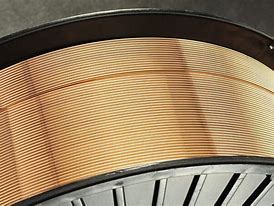**The Hidden Hero in Your Walls: Meet Copper Piping**
(Who s Copper Piping)
You walk past them every day. They hide inside walls, under floors, and behind appliances. They don’t ask for attention. They don’t complain. But without them, your morning shower would be cold, your kitchen sink useless, and your garden hose a limp noodle. Let’s talk about copper piping—the silent superstar of your home.
Copper pipes have been around a long time. Ancient Egyptians used copper for water containers. Romans built plumbing systems with it. Fast-forward to today, and copper still rules. Why? Because it works. It doesn’t rust. It fights bacteria. It bends without breaking. If pipes had a superhero league, copper would wear the cape.
Think about your home’s plumbing. Chances are, copper’s doing the heavy lifting. It carries water from the street to your faucets. It handles hot and cold without sweating. Plastic pipes might crack in freezing weather. Steel pipes might corrode. Copper? It laughs at frost and shrugs off rust. It’s the marathon runner of plumbing—steady, reliable, tough.
Let’s get technical for a minute. Copper pipes come in different thicknesses. Type M is thin and works for most homes. Type L is thicker, ideal for underground lines. Type K is the heavyweight, used for harsh conditions. Builders pick copper because it’s easy to install. Cut it, solder it, done. No glue, no waiting. A plumber’s best friend.
But copper isn’t perfect. It costs more than plastic. Thieves sometimes steal it from construction sites. Yet most people agree—the price is worth it. Copper lasts decades. It rarely leaks. It even kills germs. Studies show copper surfaces eliminate bacteria fast. Your pipes aren’t just moving water. They’re quietly cleaning it.
Ever wonder why copper looks green on old statues? That’s patina—a natural coating that protects the metal. Your pipes won’t turn green, though. They’re tucked away from weather. Indoors, copper stays shiny or gets a dull brown coat. Either way, it keeps doing its job. No drama, no fuss.
Some folks worry about copper and health. Old pipes might let tiny bits of metal into water. But modern standards fixed that. Today’s copper pipes are safe. They meet strict rules. If your home was built after 1970, relax. Your water’s fine. Plus, copper adds tiny minerals to water. Some say it tastes better. Try it—fill a glass from the tap and see.
Now let’s bust a myth. People say copper pipes freeze and burst. Truth? Any pipe can burst if it freezes. Copper handles pressure better than most. Insulate your pipes, keep the heat on, and they’ll survive winter. Copper’s tough, but it’s not magic. Give it a little help.
What about the future? New materials pop up—PEX, PVC, stainless steel. They’re cheaper, lighter, easier to install. Yet copper isn’t going anywhere. Pros trust it. Building codes require it for gas lines. It’s recyclable, too. Scrap copper gets melted into new pipes. Your old pipes could become part of a bridge, a phone, or another home.
Next time you turn on the tap, think about the journey that water took. It raced through copper tubes, twisted around corners, dodged joints, and leaped out the faucet. Those humble pipes made it happen. They don’t need applause. They don’t demand shiny upgrades. They just do their job—day after day, year after year.
(Who s Copper Piping)
So here’s to copper piping. The unsung champion of your walls. The quiet force behind your daily routines. It won’t trend on social media. It won’t get a fancy redesign. But without it, modern life would grind to a halt.
Inquiry us
if you want to want to know more, please feel free to contact us. (nanotrun@yahoo.com)



